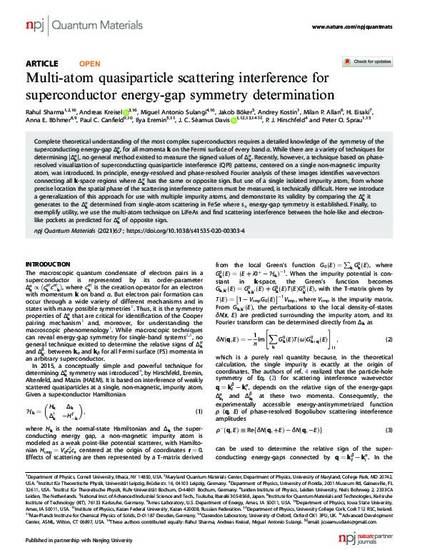
Complete theoretical understanding of the most complex superconductors requires a detailed knowledge of the symmetry of the superconducting energy-gap Δαk, for all momenta k on the Fermi surface of every band α. While there are a variety of techniques for determining |Δαk|, no general method existed to measure the signed values of Δαk. Recently, however, a technique based on phase-resolved visualization of superconducting quasiparticle interference (QPI) patterns, centered on a single non-magnetic impurity atom, was introduced. In principle, energy-resolved and phase-resolved Fourier analysis of these images identifies wavevectors connecting all k-space regions where Δαk has the same or opposite sign. But use of a single isolated impurity atom, from whose precise location the spatial phase of the scattering interference pattern must be measured, is technically difficult. Here we introduce a generalization of this approach for use with multiple impurity atoms, and demonstrate its validity by comparing the Δαk it generates to the Δαk determined from single-atom scattering in FeSe where s± energy-gap symmetry is established. Finally, to exemplify utility, we use the multi-atom technique on LiFeAs and find scattering interference between the hole-like and electron-like pockets as predicted for Δαk of opposite sign.
Available at: http://works.bepress.com/paul_canfield/440/
